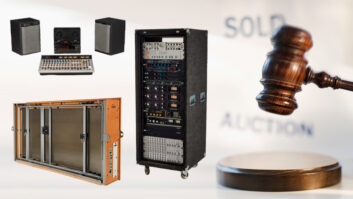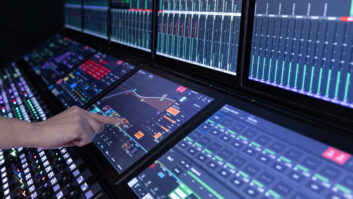A nightclub needs to stay current to stay popular. The First Avenue and Seventh Street Entry club in Minneapolis, Minn., has rolled with the times for more than three decades, and it’s still packing ’em in.
First Avenue is probably best known to moviegoers as the venue where Prince’s Purple Rain was filmed in 1983. However, the club, which resides in a former Greyhound terminal, was actually started as The Depot in ’70, when psychedelic pop was the main attraction. The club has changed with the times, surviving the disco era and blossoming into a real music-lovers’ Mecca when punk hit.
Today, the building contains three rooms — First Avenue, the Seventh Street Entry and the new VIP Lounge — and the venues’ management makes a point of showcasing an eclectic range of music. At First Avenue, space and time are divided to accommodate artists who range from Built to Spill to B.B. King, and from Coolio to Cubanismo. After prime time, the main room at the club turns into a “Dance-a-teria,” which features reggae or salsa or electronica, depending on what night of the week it is.
“What I love about working here is that one night you see a three-piece funk band onstage, and the next night you’ll have a 16-piece African band,” says longtime stage manager Conrad Sverkeson. “It changes from day to day, which I think is kind of cool.”
Another aspect of First Avenue that has changed recently is the P.A. Sverkeson explains that the club’s “hodgepodge of old boxes” was replaced this year with an installed Electro-Voice X-Array loudspeaker system powered by E-V amps. “Once we listened to the E-V system,” says Sverkeson, “we realized that listening to our old system was like listening to an AM radio.”
Miles Kennedy, who is the stage manager for the First Avenue room and does maintenance, installation and FOH mixing for all of the rooms, says that the new E-V system is well suited for the wide range of musical styles. “We can program different presets in for our DJs, spoken-word nights, loud rock show nights or rap nights, where we can get more low end out of the system when we need it,” he explains. “It’s pretty user-friendly for all of us. We can leave our EQ pretty flat and get away with it.”
Most of the rest of First Avenue’s gear is rented from local sound company Downtown Sound. Even the consoles for the main room, a recently refurbished Yamaha PM3000 at FOH and a Ramsa SR-40 for monitors, are leased. “We lease because we have so many different options in terms of when we need stuff and where we need it,” explains Kennedy. “Also, if we have a couple of dark days, they can use the boards elsewhere, and we do have shows where [visiting engineers] need a Midas board or need more than 40 channels.”
Kennedy says that the main room at First Avenue is “pretty sparse. It’s the original old marble floor, and up in the balcony, it’s glassed off a bit, so during soundcheck, you kind of wonder what the heck’s going on. But when you have people on the dance floor, usually from 400 to 1,400 people, it’s just a really wonderful, warm-sounding room. There’s great coverage with the X-Array system, too; the nice thing about it is, it’s loud but not piercing. It’s very full and very present.”
The Seventh Street Entry facility is mainly used for smaller rock shows, and the system up there features custom boxes containing E-V cone speakers and JBL horn drivers, powered by Crest amps. At FOH, there’s a new Allen and Heath GL3300 board. The smallest room, the VIP Lounge, is currently being rewired and will be set up for acoustic acts, spoken-word performers and DJs.
At the time of this interview, Clarence Gatemouth Brown was doing his soundcheck in the main room, and the fall schedule included appearances by Dave Navarro, Hank Williams III, the Henry Rollins Band, Megadeth, Los Straitjackets, Dr. John and others. Next time you’re in the Twin Cities, check out the new system at a club that’s still strong at 30.
Barbara Schultz is Mix’s associate editor.







